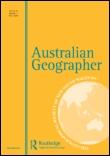/ library resources
Showing items 1 through 9 of 4188.This case study from Stockholm County, Sweden, explores practitioners’ experiences of barriers and bridges in municipal planning practices to support actions for ecosystem services.
In this study, a knowledge-based fuzzy classification method was used to classify possible soil-landforms in urban areas based on analysis of morphometric parameters (terrain attributes) derived from digital elevation models (DEMs).
The recent decades have witnessed a significant increase in the population in peri-urban areas which led to a progressive transformation of peri-urban landscapes, and the reduced ability of agriculture to provide ecosystem services.
Drastic growth of urban populations has caused expansion of peri-urban areas—the transitional zone between a city and its hinterland.
Street trees, native plantings, bioswales, and other forms of green infrastructure alleviate urban air and water pollution, diminish flooding vulnerability, support pollinators, and provide other benefits critical to human well-being.
Due to industrial civilization, the decline of the countryside has become a global phenomenon. Spain is a good example that reflects this issue in the rural areas of the European Union because more than half of all municipalities in the country are at risk of extinction.
The contemporary urbanization and its implication to land use dynamics especially in the peri-urban areas are emerging as a cross-cutting theme in policy debates and scientific discourse.
The purpose of this research is to better conserve biodiversity by improving land allocation modeling software. Here we introduce a planning support framework designed to be understood by and useful to land managers, stakeholders, and other decision-makers.
This paper examines the various ways in which migrant settlers have gained and maintained access to land in the informal urban settlements of Wewak, the provincial capital of East Sepik Province, Papua New Guinea (PNG).
Pagination
Land Library Search
Through our robust search engine, you can search for any item of the over 73,000 highly curated resources in the Land Library.
If you would like to find an overview of what is possible, feel free to peruse the Search Guide.




